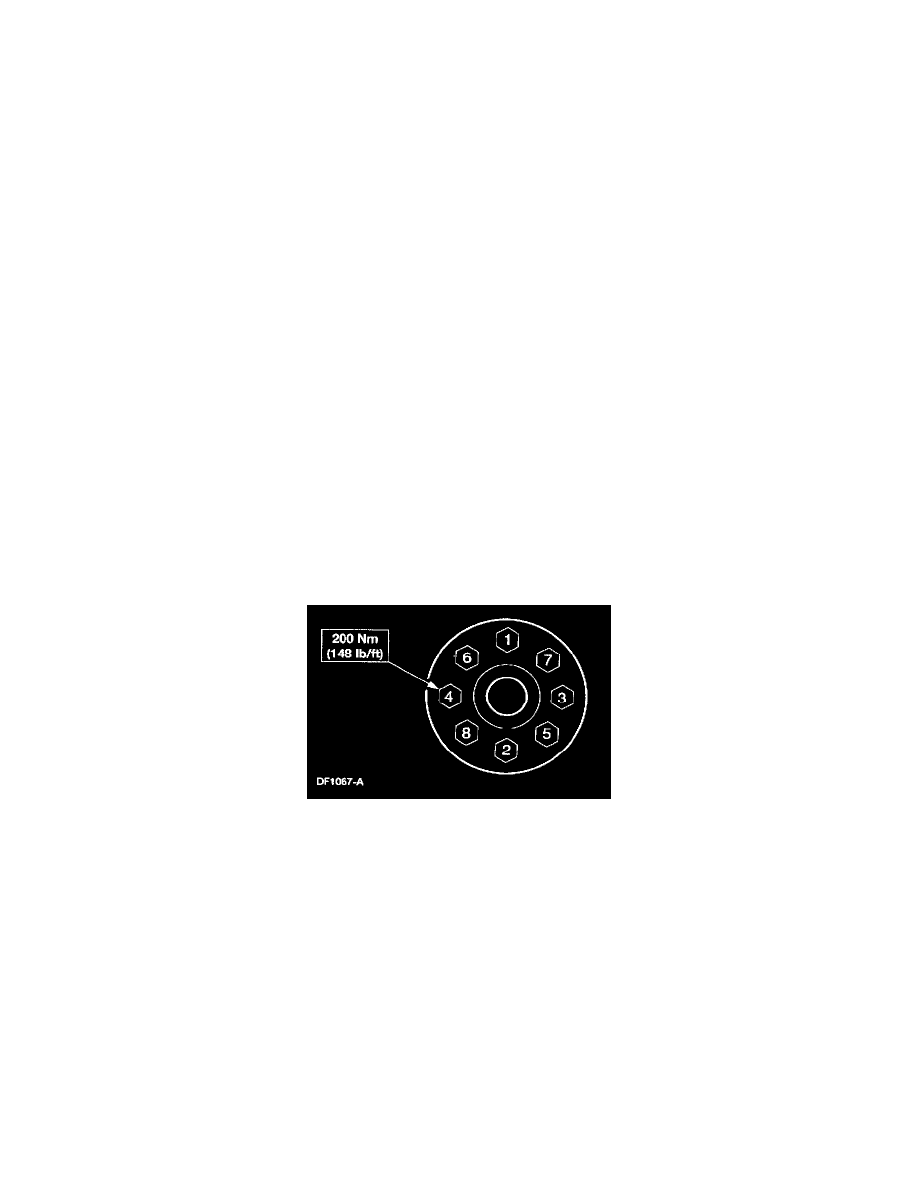F 450 2WD Super Duty V10-6.8L VIN S (1999)

Tires: Service and Repair
Single Wheels
Removal
1. Remove the wheel cover, if so equipped.
2. CAUTION: Do not use heat to loosen a seized lug nut. Heat can damage the wheel and wheel bearings.
NOTE: Do not remove the lug nuts at this time.
With the weight of the vehicle still on the tires, loosen the lug nuts.
3. Raise the vehicle until the wheel and tire assembly clears the floor.
4. Remove the lug nuts.
5. Remove the wheel and tire assembly.
Installation
1. WARNING: When a wheel is installed, always remove any corrosion, dirt or foreign material present on the mounting surfaces of the
wheel or the surface of the front disc brake hub and rotor that contacts the wheel. Installing wheels without proper metal-to-metal
contact at the wheel mounting surfaces can cause the lug nuts to loosen and the wheel to come off while the vehicle is in motion, resulting
in loss of control.
Position the wheel and tire assembly on the vehicle.
2. NOTE: Inspect the lug nut and washer assemblies. Verify that the washer portion spins freely. If the washer does not spin freely, replace the lug
nut and washer assembly.
Install the lug nuts loosely.
3. Turn the wheel until one lug nut is at the top of the wheel hub bolt circle. Tighten the lug nut until snug. In a crisscross-type pattern, tighten the
remaining lug nuts until snug to minimize runout.
4. Lower the vehicle.
Wheel Tightening Sequence
5. CAUTION: Failure to tighten the lug nuts in the sequence shown can result in high wheel and tire runout, which will speed up the development
of brake roughness, shudder and vibration.
With the weight of the vehicle on the tires, tighten the lug nuts to specification in the sequence shown.
6. Install the wheel cover, if so equipped.
7. Advise the customer that the lug nuts need to be retightened at 800 km (500 miles) after wheel change or any other time the lug nuts have been
loosened. This is required to permit the wheel clamping system to seat properly so that the lug nuts will hold a uniform clamp load and remain
fully tightened.
